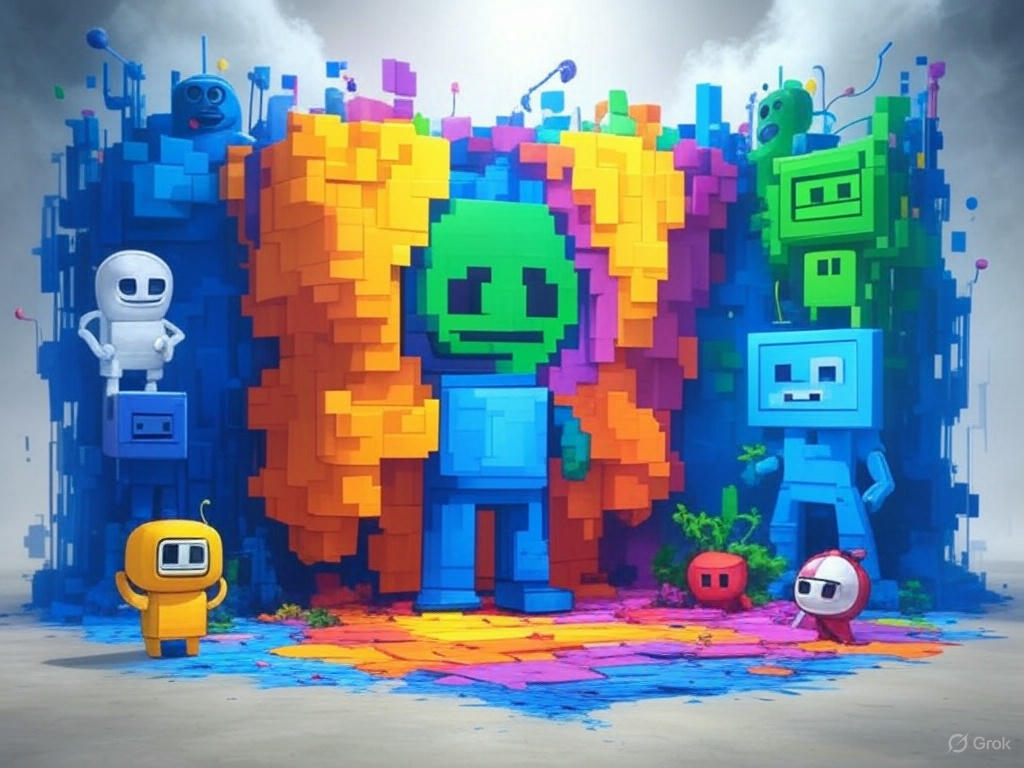[ez-toc]
NFTs (non-fungible tokens) have created a sensation in art, changing the perception of digital ownership and the value of virtual objects. Blockchain technology has suddenly turned digital images, animations, and videos into multimillion-dollar assets. A telling case is the story of Mike Winkelmann (Beeple), whose work “Everydays: The First 5000 Days” sold at Christie’s for a record $69.3 million. Eight-bit CryptoPunks went for $11.7 million, while Code of the World Wide Web went for $5.4 million.
Do NFTs represent a true revolution in the art that changed the market forever? The experts of the ICOholder platform have their own opinion on this matter. In this article, we will talk about the relationship between NFTs and art.
What are NFTs, and how do they work?
NFTs (non-fungible tokens) are unique digital assets based on blockchain technology that confirm the ownership of a certain digital object. Unlike cryptocurrencies, where each coin is identical to another, each NFT has unique characteristics and cannot be interchanged. In simple words, an NFT is a digital certificate of authenticity that records the authorship, ownership history, and uniqueness of an object.
The technology is blockchain-based, where each token contains metadata about the digital object, information about the creator, and the current owner. Thanks to smart contracts, NFTs provide transparency of transactions and the possibility for creators to automatically receive royalties when their works are resold.
NFT as a tool for artists and collectors
NFT has created a tool to monetize works that were previously almost impossible to sell due to the ease of copying. This is a real revolution in art. Artists can capture authorship, sell “original” digital works, and receive royalties on each resale, thanks to smart contracts. NFT technology has helped many artists break out of the digital underground.
Benefits for collectors of digital assets:
- 24/7 market accessibility with no geographic restrictions;
- Transparent ownership history and authentication;
- Quick resale on specialized marketplaces;
- High price volatility;
- Dependence on the cryptocurrency market.
Risks and criticisms of NFTs in art
Most NFT transactions are made via the Ethereum blockchain, which is energy intensive. It takes up to 35 kWh of electricity to confirm a single transaction, which is about the same amount of electricity as an average EU resident’s weekly consumption. All this causes concern among environmentalists because a large number of transactions with NFTs leads to an increase in carbon dioxide emissions. Some companies are already switching to greener technologies – blockchains with lower energy consumption.
In addition to environmental concerns, there are other risks:
- Metadata may be lost and hosting services shut down;
- The owner does not have physical access to the artwork;
- There are always risks of theft of digital assets from crypto-wallets;
- Traditional artists and collectors consider NFTs a speculative tool with no artistic value;
- High price volatility creates risks of investment loss.
The future of NFT in art: Where is the market headed?
The development of NFTs in art depends on how actively the technology is introduced into traditional spheres – art galleries, museums, and auction houses. Even today, sites like Sotheby’s and Christie’s are actively selling digital works, and some museums are considering tokenizing their collections. This helps preserve cultural heritage and make art accessible to all.
On the other hand, NFTs open new horizons for artists – virtual galleries in meta-universes, the opportunity for interactive engagement with fans, and the creation of dynamic works that change depending on the terms of smart contracts. All this makes digital art alive and evolving.
The future of NFTs in art depends on how well they fit into the classic art market and how new digital formats evolve. If technology continues to improve and collectors, museums, and artists actively utilize it, NFTs could become an important part of the art of the future – vibrant, accessible, and interactive.
Final thoughts
NFTs have already changed the art market, but their future is yet to be determined. On one hand, they provide artists with new opportunities for monetization and audience interaction. Still, on the other hand, they face problems in ecology, legal regulation, and perception by the traditional art market.
The introduction of NFTs into museums and galleries may strengthen their position, but will they remain a key element of future art, or will they turn into a niche tool? The answer to this question depends on the evolution of the technology, market adaptation, and audience interest. Let’s follow the evolution of NFTs, which, according to many experts, is not yet complete.
